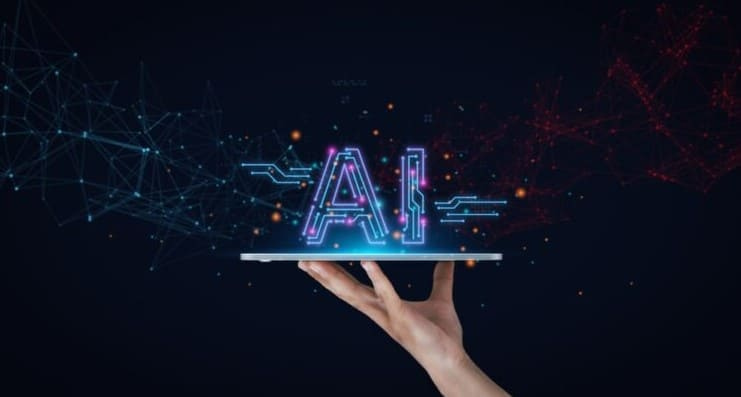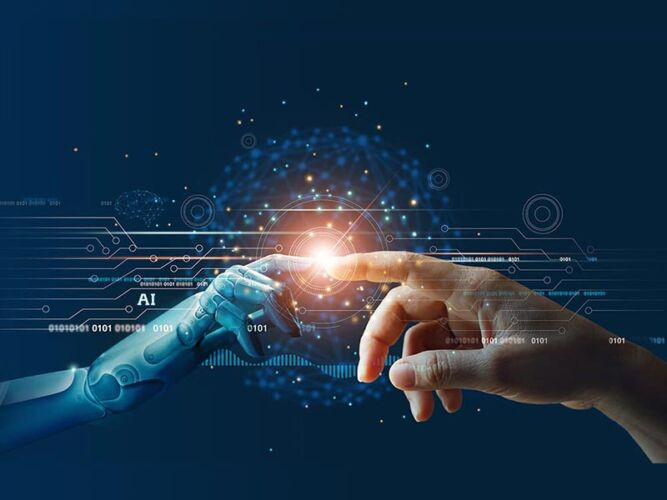Artificial intelligence (AI) is the replication of human intellect in robots that are programmed to think and act like humans. The phrase may also refer to any machine that demonstrates human-like characteristics such as learning and problem-solving.
The capacity of artificial intelligence to rationalise and execute actions that have the highest likelihood of reaching a certain objective is its ideal feature. Machine learning is a subset of artificial intelligence that refers to the idea that computer systems can automatically learn from and adapt to new data without the assistance of humans. Deep learning approaches facilitate autonomous learning by absorbing massive volumes of unstructured data such as text, photos, or video.
UNDERSTANDING ARTIFICIAL INTELLIGENCE
When most people hear the word artificial intelligence, they immediately think of robots. That’s because big-budget movies and literature tell scenarios about human-like robots wreaking havoc on the planet. However, this could not be further from the truth.
Artificial intelligence is founded on the idea that human intellect may be characterised in such a manner that a computer can simply duplicate it and complete tasks ranging from the most basic to the most complicated. Artificial intelligence’s aims include imitating human cognitive processes. To the degree that they can be concretely described, researchers and developers in the field are making unexpectedly quick progress in replicating tasks like as learning, reasoning, and perception.
NARROW AI
Narrow AI is a sort of AI that can do a certain task intelligently. Narrow AI is the most frequent and currently accessible AI in the area of Artificial Intelligence. Narrow AI cannot perform outside its field or constraints because it has only been educated for a single purpose. As a result, it is sometimes referred to as weak AI.
If narrow AI is pushed past its bounds, it might fail in unexpected ways. Apple Siri is a fantastic example of Narrow AI, however it only performs a restricted set of pre-defined functions. Narrow AI also includes IBM’s Watson supercomputer, which employs an Expert system method mixed with Machine learning and natural language processing. Playing chess, purchasing suggestions on an e-commerce site, and other examples of Narrow AI
GENERAL AI
General AI is a type of intelligence which could perform any intellectual task with efficiency like a human. The idea behind the general AI to make such a system which could be smarter and think like a human by its own.
Currently, there is no such system exist which could come under general AI and can perform any task as perfect as a human. The worldwide researchers are now focused on developing machines with General AI. As systems with general AI are still under research, and it will take lots of efforts and time to develop such systems.
SUPER AI
Super AI is a degree of system intelligence at which machines may outperform humans in any task that requires cognitive abilities. It is the result of generic AI. Some major properties of powerful AI include the capacity to think, reason, solve puzzles, make decisions, plan, learn, and communicate on its own. Super AI is still a speculative Artificial Intelligence notion. Real-world development of such systems is still a world-changing challenge.
REACTIVE MACHINES
These are the most primitive versions of AI systems, with extremely restricted capabilities. They mimic the human mind’s capacity to respond to many types of stimuli. Memory-based functionality is not available on these devices. This means that such robots cannot utilise prior experiences to guide their current behaviours, i.e., they lack the ability to “learn.”
These devices could only respond to a restricted set or combination of inputs automatically. They cannot be utilised to improve their operations by relying on memory. IBM’s Deep Blue, which defeated chess Grandmaster Garry Kasparov in 1997, is a well-known example of a reactive AI computer.
LIMITED MEMORY
Limited memory machines are machines that, in addition to possessing the characteristics of fully reactive machines, may make choices based on past data. Almost all present applications that we are aware of fall under this category of AI. All modern AI systems, including those that use deep learning, are taught using vast amounts of training data, which they store in their memory to construct a reference model for addressing future issues.
For example, an image recognition AI is taught to name items it scans by utilising hundreds of images and their labels. When such an AI scans a picture, it utilises the training images as references to comprehend the contents of the image supplied to it, and it makes decisions based on that understanding.
When an image is scanned by such an AI, it uses the training images as references to understand the contents of the image presented to it, and based on its “learning experience” it labels new images with increasing accuracy.
Almost all present-day AI applications, from chatbots and virtual assistants to self-driving vehicles are all driven by limited memory AI.
















